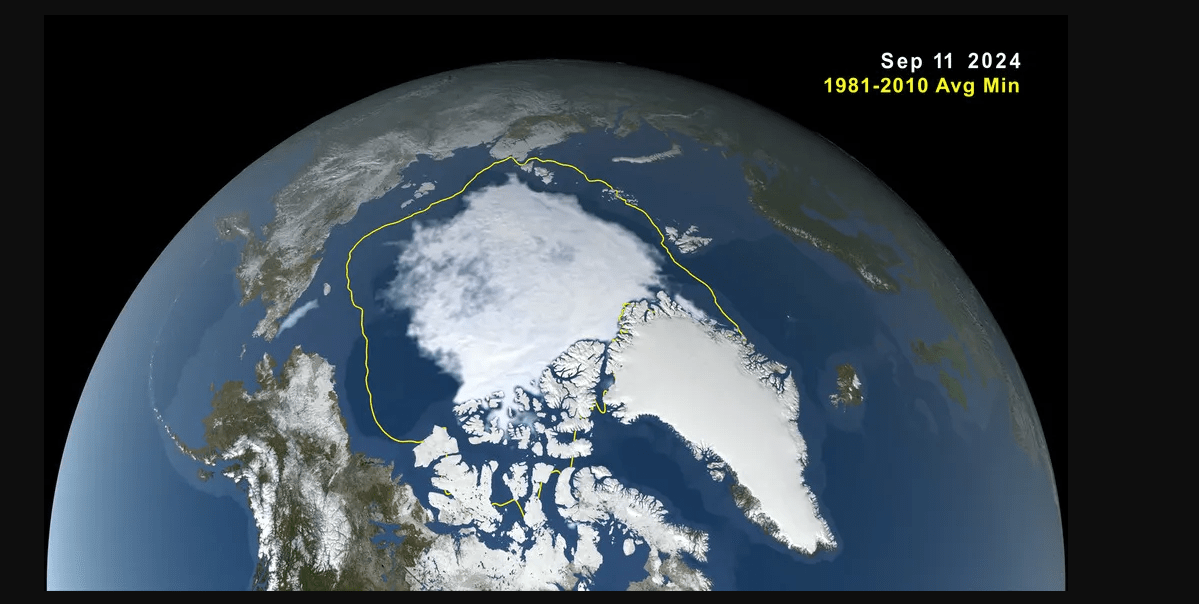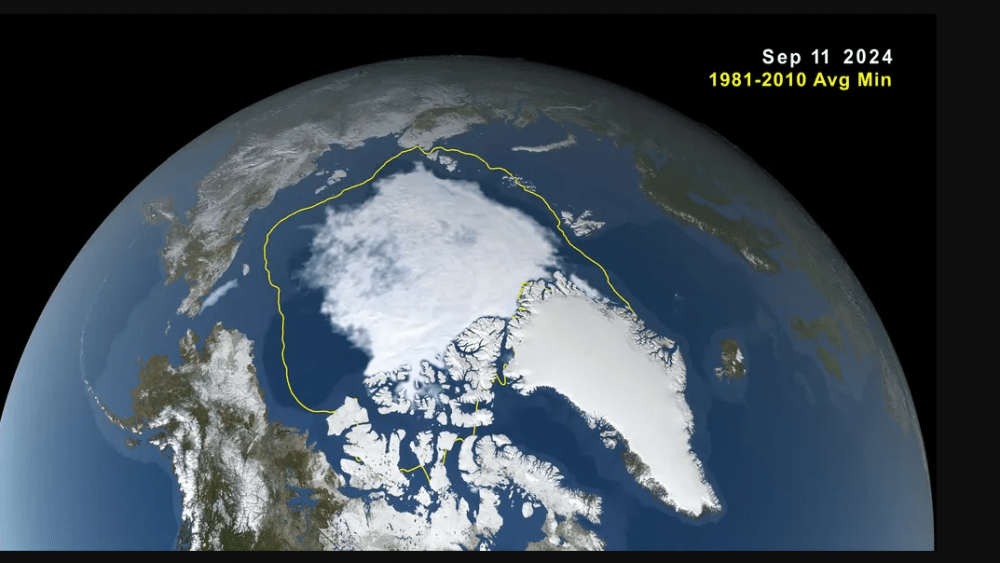Arctic sea ice plays a part in how our winters unfold. The more extensive the arctic ice is, the potential is there for harsher winter temps.

This year’s minimum remained above the all-time low of 1.31 million square miles (3.39 million square kilometers) set in September 2012. While sea ice coverage can fluctuate from year to year, it has trended downward since the start of the satellite record for ice in the late 1970s. Since then, the loss of sea ice has been about 30,000 square miles (77,800 square kilometers) per year, according to NSIDC.
Scientists currently measure sea ice extent using data from passive microwave sensors aboard satellites in the Defense Meteorological Satellite Program, with additional historical data from the Nimbus-7 satellite, jointly operated by NASA and the National Oceanic and Atmospheric Administration (NOAA).
One of my colleagues in the NWS (National Weather Service) is currently writing a paper on how the changing sea ice is effecting our winter months. What he has found so far is that arctic sea ice is developing later which in turn is delaying our winter season by about a month. So, instead of winter being typically DJF it is now, in reality JFM. We all know that the LRC is the centerpiece to our weather but Arctic sea ice DOES play a role.





